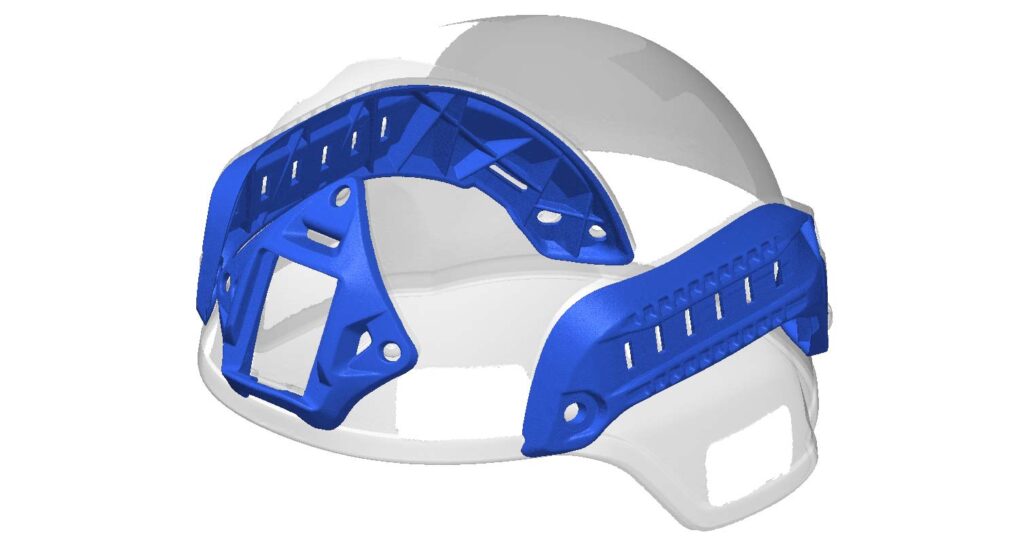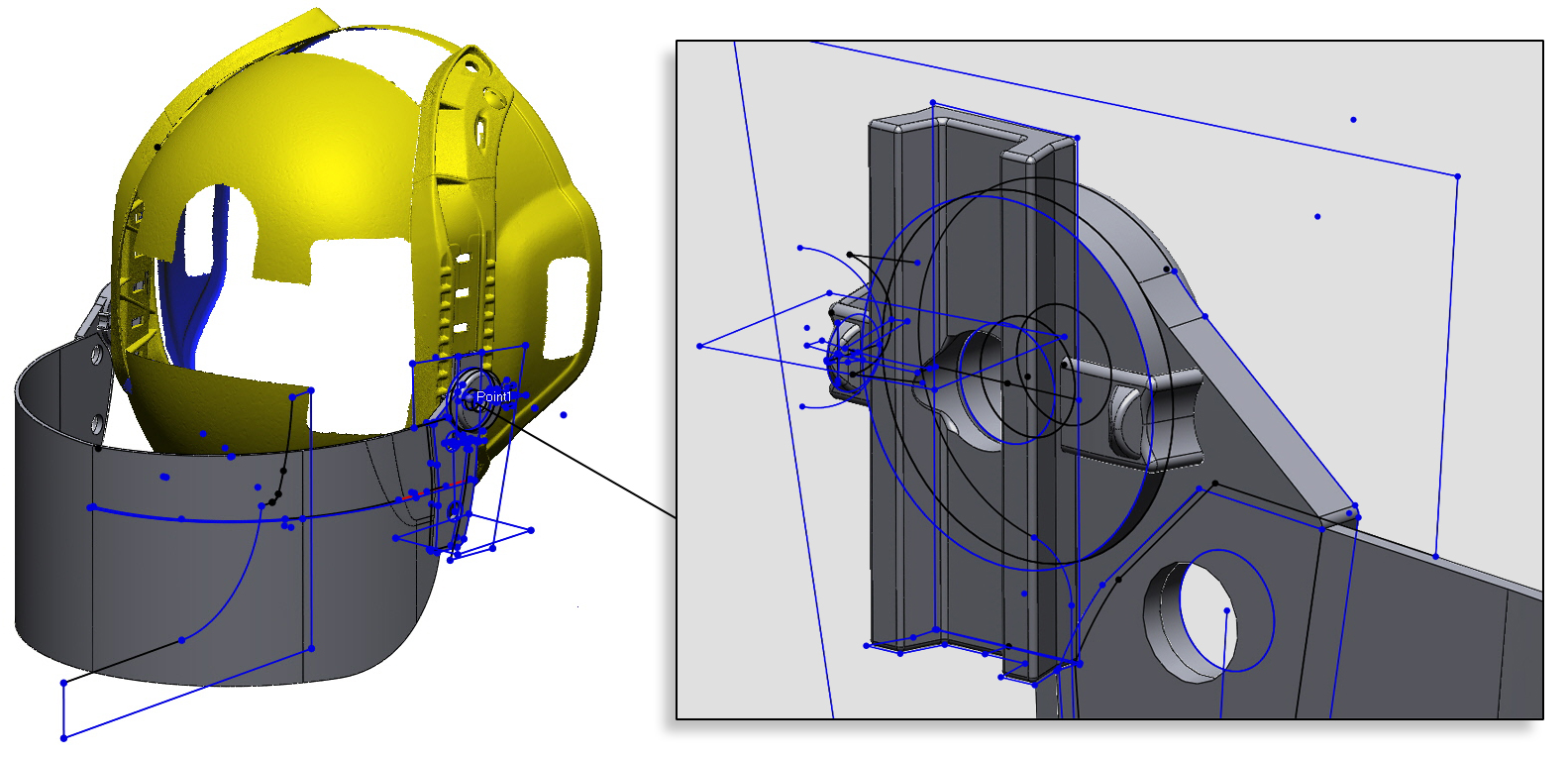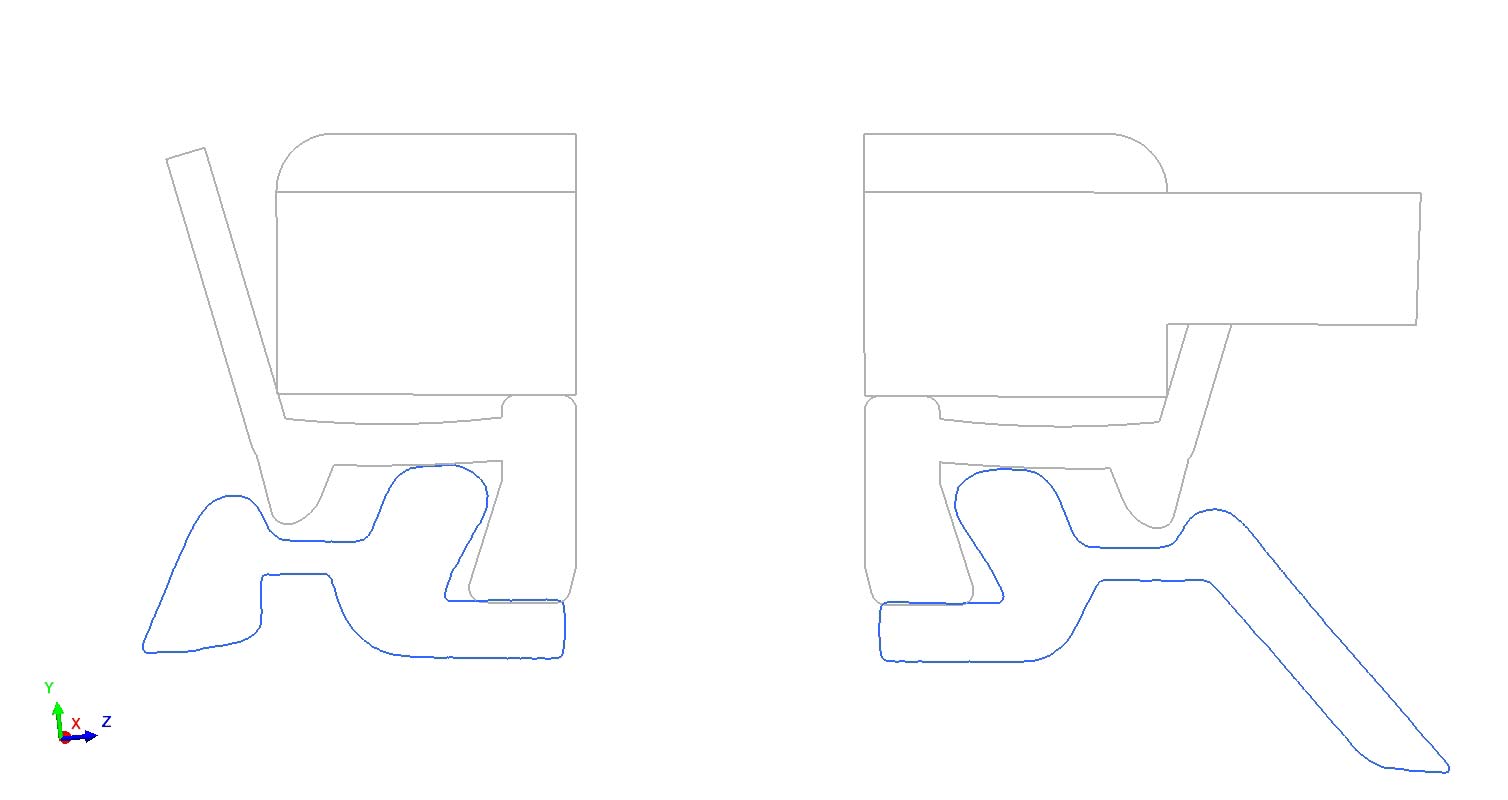DESIGNING NEW COMPONENTS FOR PERFECT FIT AND FUNCTION
Combining the power of the world’s best scanning hardware and software allows us to produce models with incredible accuracy. This case study focuses on acquiring high resolution, water tight geometry using laser and CT scanning technologies.
This helmet has several components with attachment features for accessories like lights, visors, and earmuffs. However, if you don’t have existing CAD, how do you effectively design new products?

The first step is to acquire water tight, high resolution data. Water tight data means no data is missing in the file. This is important for properly designing a product around all scenarios – if data is missing, you can’t understand proper fit and function. We scanned and segmented the attachment points and built a coordinate system to begin modeling visor attachment mechanisms.
Below shows the 2D sketches produced in Geomagic.


The final step of any reverse engineering project is to verify accuracy of the produced model. This verification takes the form of either Scan to CAD profile comparisons, or visual checks with 2D cross sections. The visor slides fit inside the tracks and the clips have curved tensioners to ensure tight fits into the slots.



